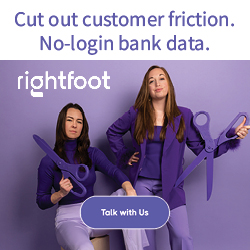Articles by P Blue
The Intriguing History of the Automated Clearing House (ACH)
April 26, 2023 The Automated Clearing House (ACH) was born in the 1970s as a response to the inefficiencies of paper-based transactions, and it’s been revolutionizing the world of electronic payments ever since.
The Automated Clearing House (ACH) was born in the 1970s as a response to the inefficiencies of paper-based transactions, and it’s been revolutionizing the world of electronic payments ever since.
In the late 1960s, the United States was facing a mounting problem: the rapid growth in paper checks. Banks were drowning in a sea of paper as they manually processed these transactions. It was a labor-intensive, time-consuming, and error-prone process.
Enter the ACH, an electronic network that emerged as a solution to alleviate the paper burden. In 1972, California’s Bank of America and the Federal Reserve Bank of San Francisco piloted the first ACH program. Their goal was simple: to streamline the check-clearing process and improve efficiency within the financial industry.
In 1974, the National Automated Clearing House Association (NACHA) was formed, providing a much-needed governance structure for the ACH network. Its role was to standardize processes, establish rules and guidelines, and promote the adoption of ACH services across the nation.
As the number of participating financial institutions grew, the ACH network flourished. Electronic transactions gained popularity, and by the end of the decade, paper checks began to lose their dominance.
Throughout the 1980s and 1990s, the ACH network continued to evolve. The advent of the internet and new financial technologies further propelled ACH adoption. Direct deposit, electronic bill payments, and other ACH services became commonplace, reducing the need for paper checks.
In the 2000s, ACH transactions grew exponentially. The Check Clearing for the 21st Century Act (Check 21) in 2003 accelerated the transition to electronic check processing, further cementing the ACH’s role in the financial landscape.
Today, the ACH network processes over 25 billion transactions annually, transferring trillions of dollars. As the world becomes increasingly digital, the ACH network is adapting to meet the needs of businesses and consumers alike.
The introduction of Same Day ACH in 2016 marked a significant step towards real-time payments. This service allows for faster processing of transactions, reducing the waiting time for funds to be available.
As the ACH continues to grow and evolve, it remains a crucial component of the modern financial ecosystem. The once chaotic world of paper-based transactions has transformed into a streamlined, digital landscape, thanks to the innovative spirit that gave birth to the Automated Clearing House. And as technology advances, so too will the ACH, ensuring its place in the annals of financial history.
The History of Cold Calling: A Fascinating Tale of Sales and Serendipity
April 26, 2023 Once upon a time in the early 20th century, in the bustling world of sales, the art of persuasion was taking shape. Salespeople would go door-to-door, using their tenacity, charm, and ability to establish rapport with strangers on the spot to sell products and services. This approach laid the foundation for a sales technique that would eventually become known as cold calling.
Once upon a time in the early 20th century, in the bustling world of sales, the art of persuasion was taking shape. Salespeople would go door-to-door, using their tenacity, charm, and ability to establish rapport with strangers on the spot to sell products and services. This approach laid the foundation for a sales technique that would eventually become known as cold calling.
As the 1920s rolled in, a remarkable invention by Alexander Graham Bell transformed the landscape of communication: the telephone. This groundbreaking device quickly became a common household item, opening up new possibilities for salespeople. Seizing the opportunity to expand their reach, salespeople began calling potential customers without having met them in person. This allowed them to cover more ground and increase the likelihood of closing deals. Thus, the era of cold calling began.
As cold calling gained traction, salespeople started to develop scripts to improve their success rates. These scripts ensured that key points were addressed, and objections were handled effectively. The art of persuasion continued to refine, with salespeople learning to adapt their approach based on the prospect’s reactions. By the 1950s, sales training programs and books emerged, focusing on perfecting the art of cold calling.
Entering the 1980s, the rise of telemarketing took the sales world by storm. Businesses set up call centers to reach larger audiences, and cold calling became a staple in many industries, including insurance, real estate, and financial services. However, this growth also led to increased scrutiny and regulation. In the United States, the Federal Trade Commission (FTC) introduced the Telemarketing Sales Rule in 1995, followed by the establishment of the National Do Not Call Registry in 2003. These measures aimed to protect consumers from unwanted calls and provided guidelines for legitimate businesses.
The dawn of the digital age brought about even more transformations to the sales landscape. Social media, email marketing, and targeted advertising gave businesses alternative ways to reach potential customers. While cold calling faced challenges adapting to these changes, it remained an essential part of the sales process for many organizations. In fact, the rise of Customer Relationship Management (CRM) software made cold calling more efficient and data-driven, increasing its effectiveness in the digital age.
And so, the fascinating tale of cold calling continues to unfold. From its humble beginnings as a door-to-door sales strategy to its evolution into a sophisticated marketing tool, cold calling has played an integral role in the business world. As businesses adapt to the ever-changing landscape, cold calling will undoubtedly continue to play a significant role in sales and marketing strategies for years to come. The end, or rather, to be continued…






























